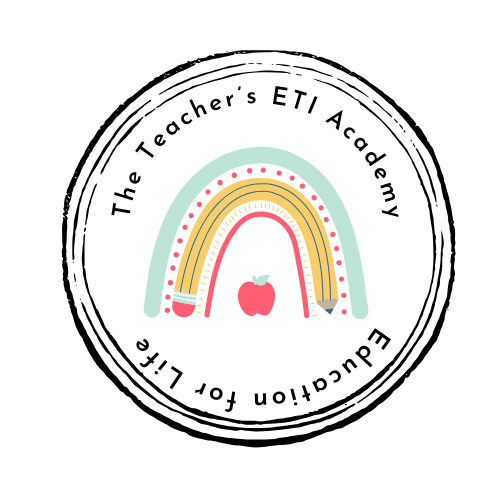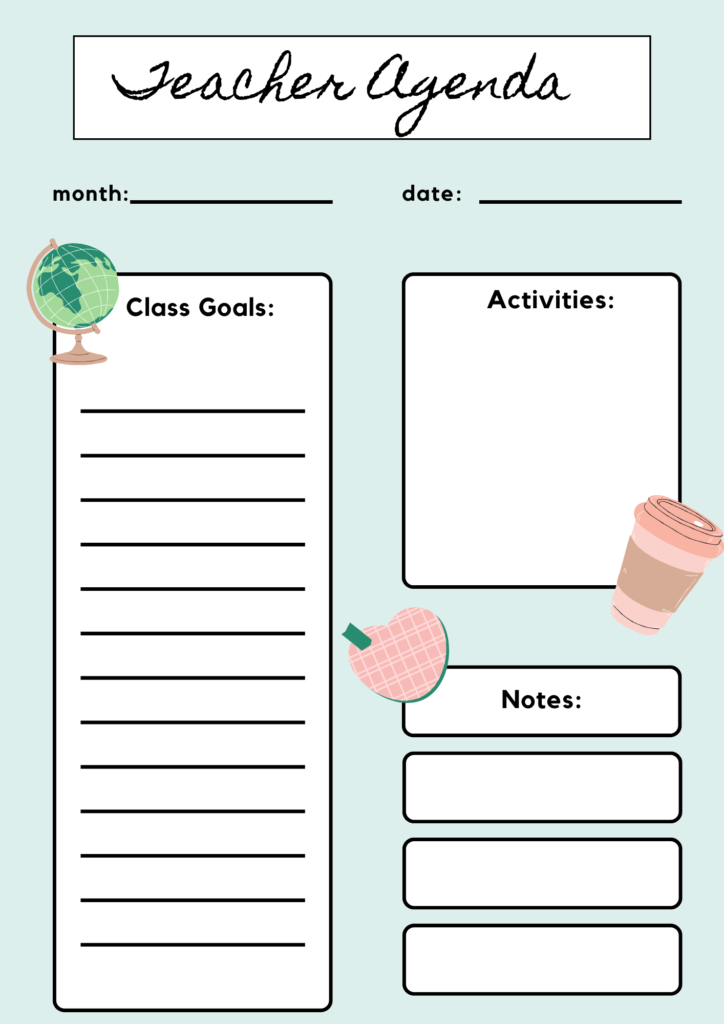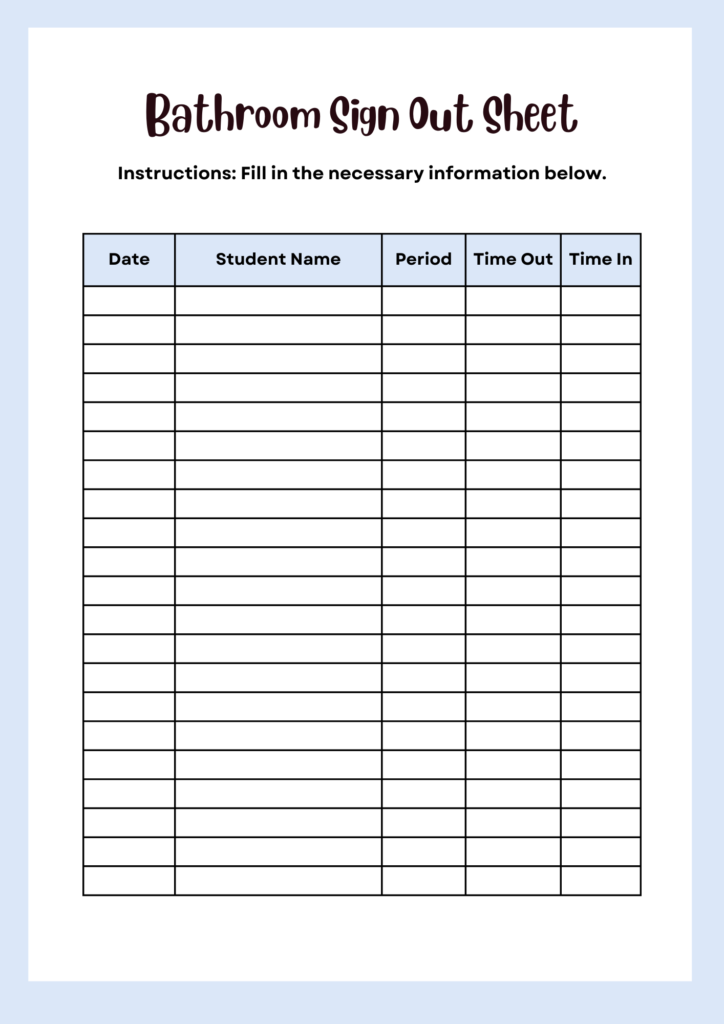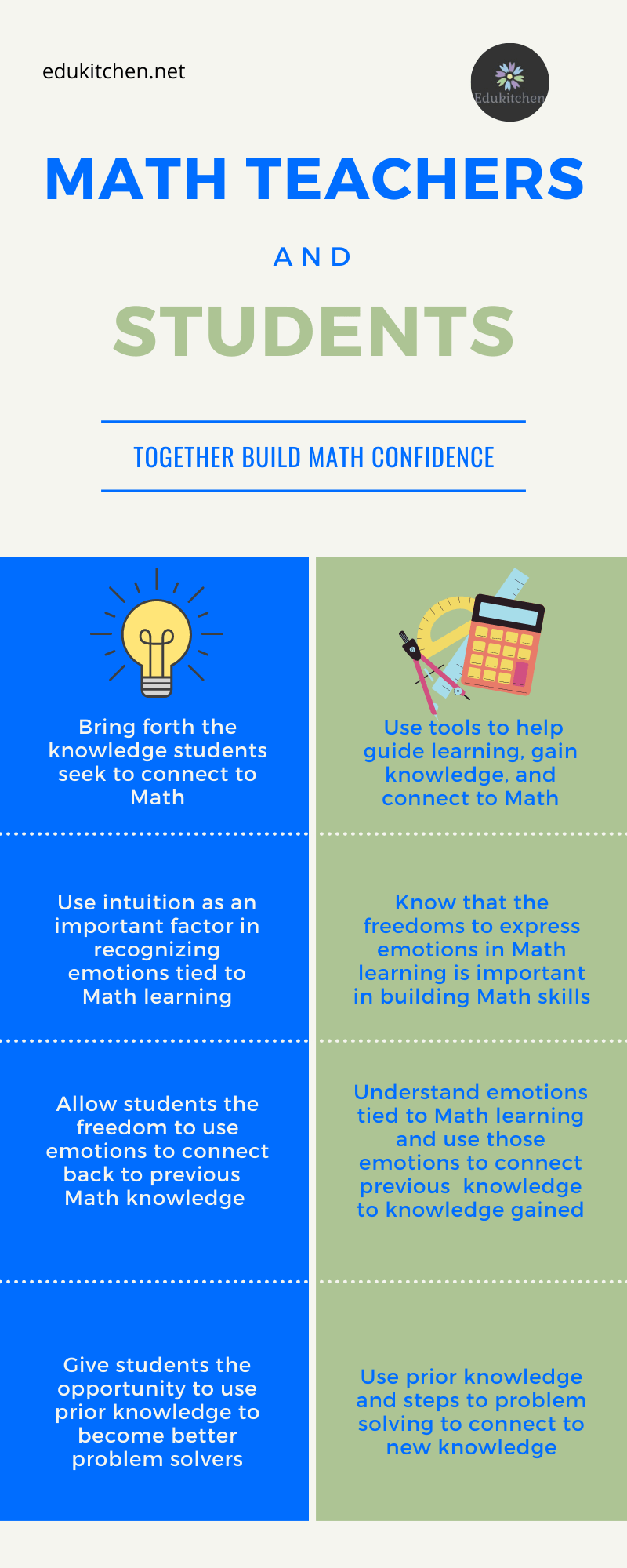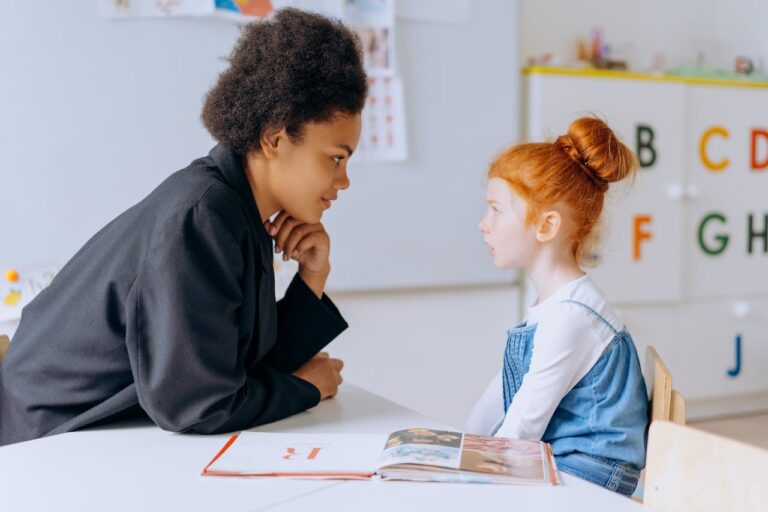Effective Lesson Plans Checklist for Teachers
Work smarter not harder by using our effective lesson plans checklist for teachers!
In this article we provide a comprehensive 7 point lesson plans checklist for teacherswhen sharing lesson plans for teachers. We provide free templates and sample lesson plans to download.
Check out this free lesson plans checklist for teachers available in our Canva library.
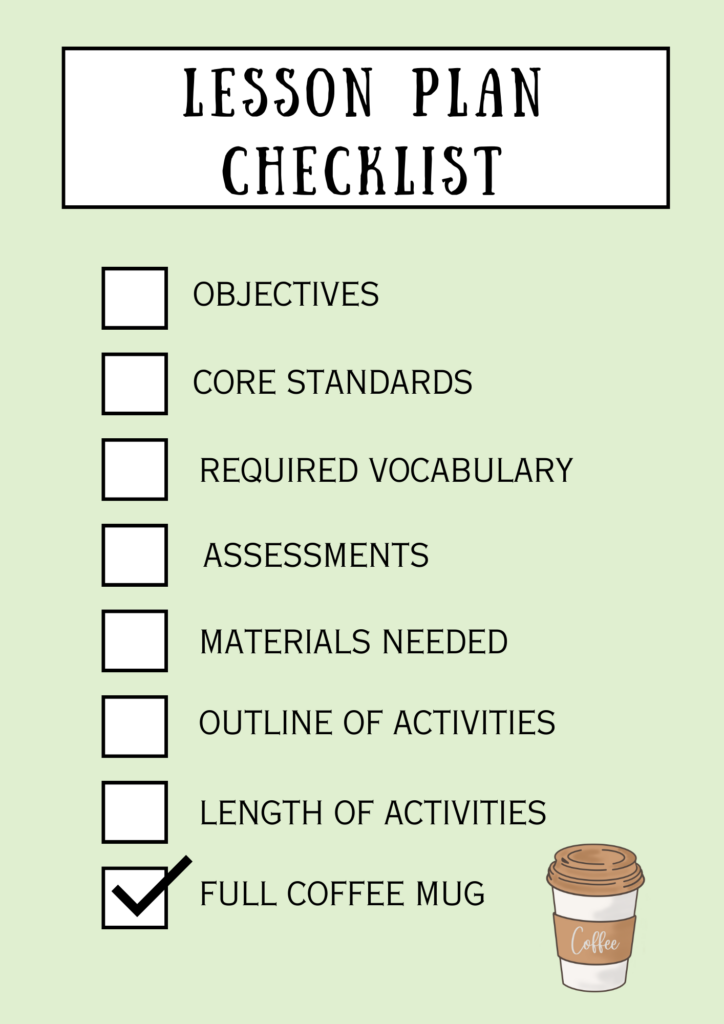
Teachers, We’ve created a 7 point effective lesson plan checklist, to help you write lesson plans quickly! Keep reading to find out more!
Lesson Plan By Working Smarter Not Harder!
When it comes to lesson planning, teachers often find themselves caught between the demands of preparing engaging, effective lessons and the limited hours in the day. But what if lesson planning didn’t have to be a marathon?

At ETI Academy, we believe in working smarter—not harder—when it comes to designing lessons. By using our 7 point checklist lesson plan when planning techniques, you can create lessons that are both impactful for students and sustainable for you.
In this article, we’ll explore practical tips and tools to help you approach lesson planning in a way that maximizes your impact while minimizing time and stress, so you can focus on what matters most: connecting with your students and inspiring a love of learning.
Students will over the years, remember teachers more for how they made them feel, over what the teacher taught them.
However, if this teacher is amazing at teaching, there are some lessons students will remember for years to come.A FREE 7 Point Lesson Plan Checklist for Teachers
Simplify your lesson planning with our FREE 7-Point Checklist for Lesson Planning by ETI Academy! Perfect for busy teachers, this checklist provides an easy-to-follow guide to ensure each lesson is focused, engaging, and aligned with learning goals. Our 7-point checklist takes the guesswork out of planning, helping you structure lessons that captivate students while saving you time and effort.
Check out our free lesson plans checklists for teachers on our TpT store!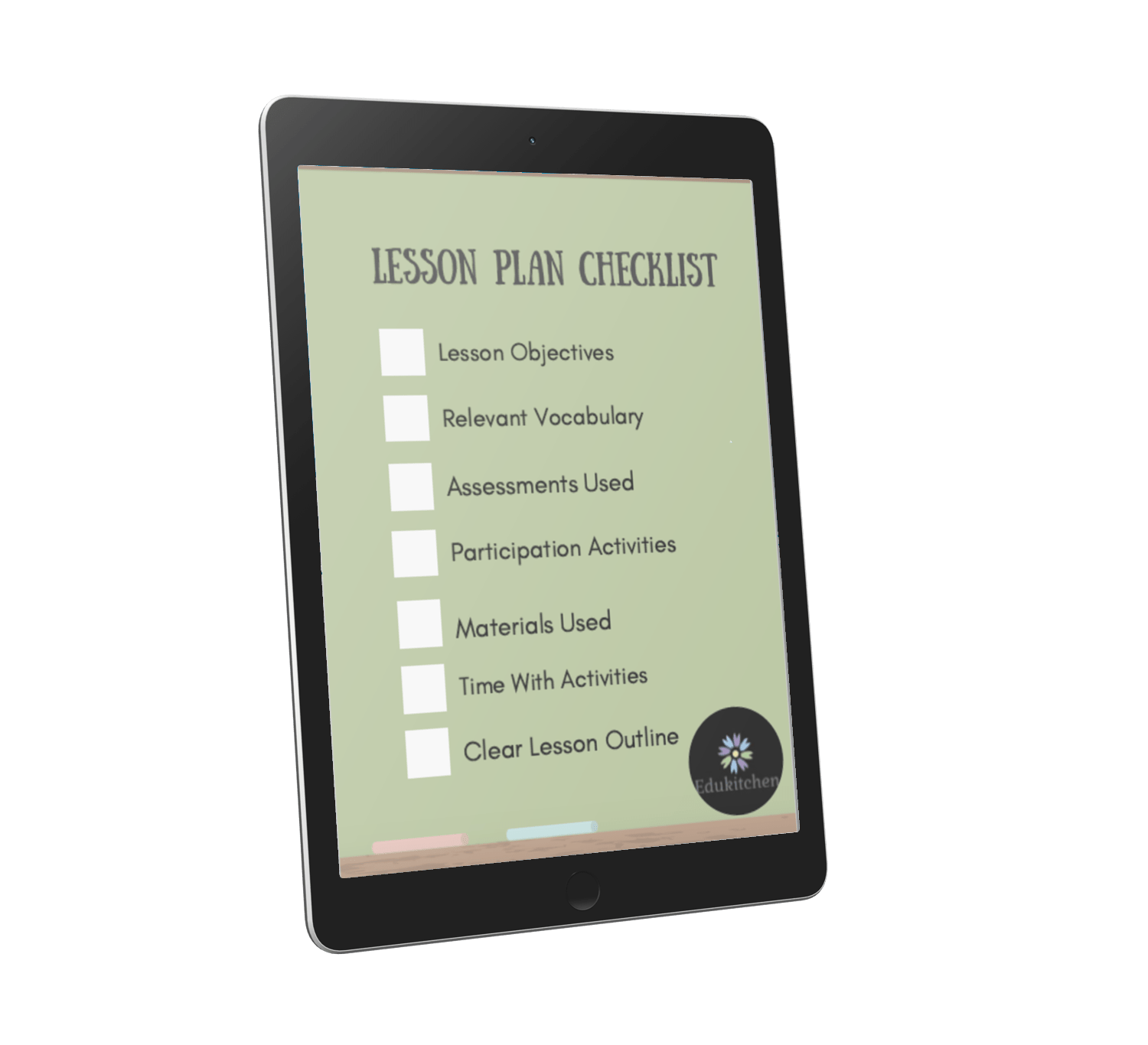
Click here to get your free copy of this checklist.
In this article I provide ways on how to write engaging lesson plans. This article is meant for new teachers, however, veteran teachers may find it useful as well!
Lesson Planning Ideas
In saving time and energy when designing a lesson plan, teachers should consider using this checklist as a way to establishing a routine in lesson planning.

Lesson planning is generally thought to see students as one homogenous group of leaners. While this may be considered as a starting benchmark, this could have implications to classroom management when those who fall above or below the class average may lose interest in the lesson and therefore disrupt the energy in the classroom.
Therefore, it is important that teachers consider methods of differentiation when it comes to having students remain interested in what they are learning.
Building Confidence With Lesson Planning
This blog contains affiliate links to highlighted websites and/or resources. By clicking on the link and making a purchase we may earn a small commission at no extra cost to you. Click here for full disclosure.
At the end of this article you can sign up to gain access to our varying selection of digital resources to use in the classroom to help with differentiation and lesson planning.
Teacher Identities in the Classroom
Before we get into our checklist on lesson planning, watch our video on the topic of teacher identities in the classroom, and how teachers can recognize challenges to their identities, and therefore build efficacy in the classroom.
For more information on teacher identity, click here to read our article.
Building Energy In The Classroom With Lesson Planning
Building energy in the classroom starts with intentional and engaging lesson planning. When lessons are thoughtfully designed, they don’t just deliver content—they ignite curiosity, spark student interest, and foster a lively learning environment. By planning lessons that are interactive, relevant, and varied, teachers can tap into students’ natural energy and enthusiasm, creating a classroom atmosphere that is both dynamic and productive.

Effective lesson planning helps structure activities that captivate attention, encourage participation, and support diverse learning styles, turning each lesson into an opportunity for meaningful connection and growth. With a strategic approach, lesson planning becomes a powerful tool for cultivating an energetic and motivated classroom.
Tools to Help Lesson Planning
At ETI Academy, we provide a variety of tools to make lesson planning easier and more efficient for teachers. Our lesson planning checklists ensure educators cover key elements such as learning objectives, activities, and assessments, helping them stay organized and focused.
These tools inlcude:
- Classroom Daily Agenda Template for All Grades
- Daily Teacher Agenda Template for All Grades
- Monthly Lesson Plan Chart Template for All Grades
- Daily Seating Chart Templates for All Grades
- First Day Semester Checklist for All Grades
- Classroom Management Rules Bundle
Our digital lesson planner offers a structured way to map out daily, weekly, or monthly lessons, making it easier to track progress and adjust plans as needed. For classroom management, our seating chart templates help teachers arrange students strategically to support learning and minimize distractions.
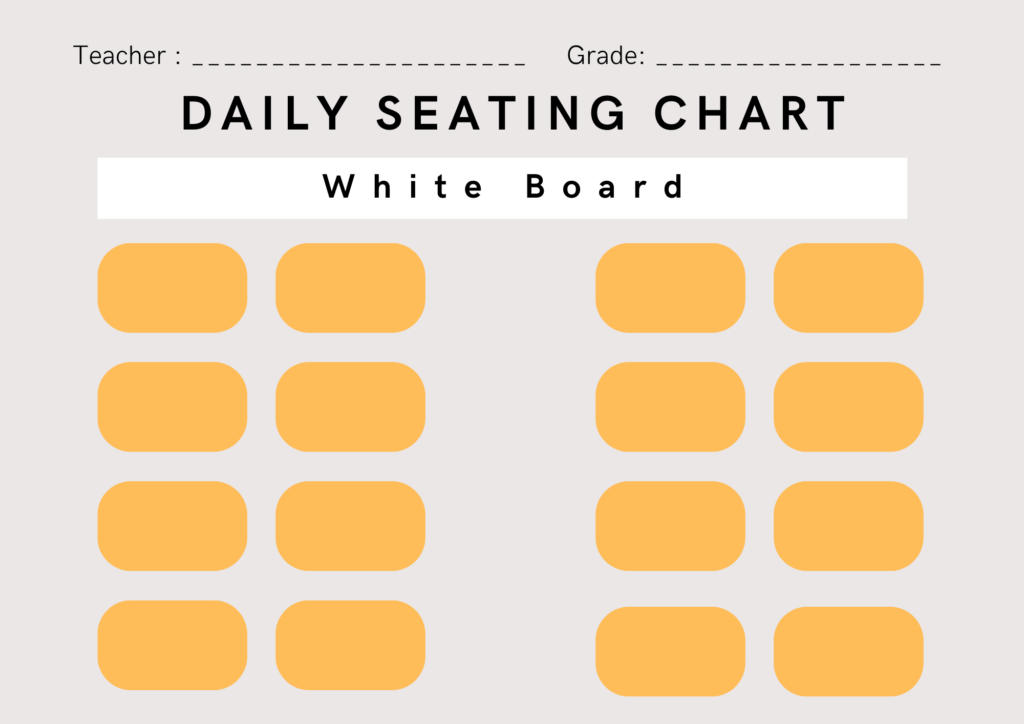
Additionally, our first-day activity suggestions provide engaging icebreakers and community-building exercises that set a positive tone for the school year. With these resources, teachers can streamline their planning process and create a well-structured, engaging classroom environment.
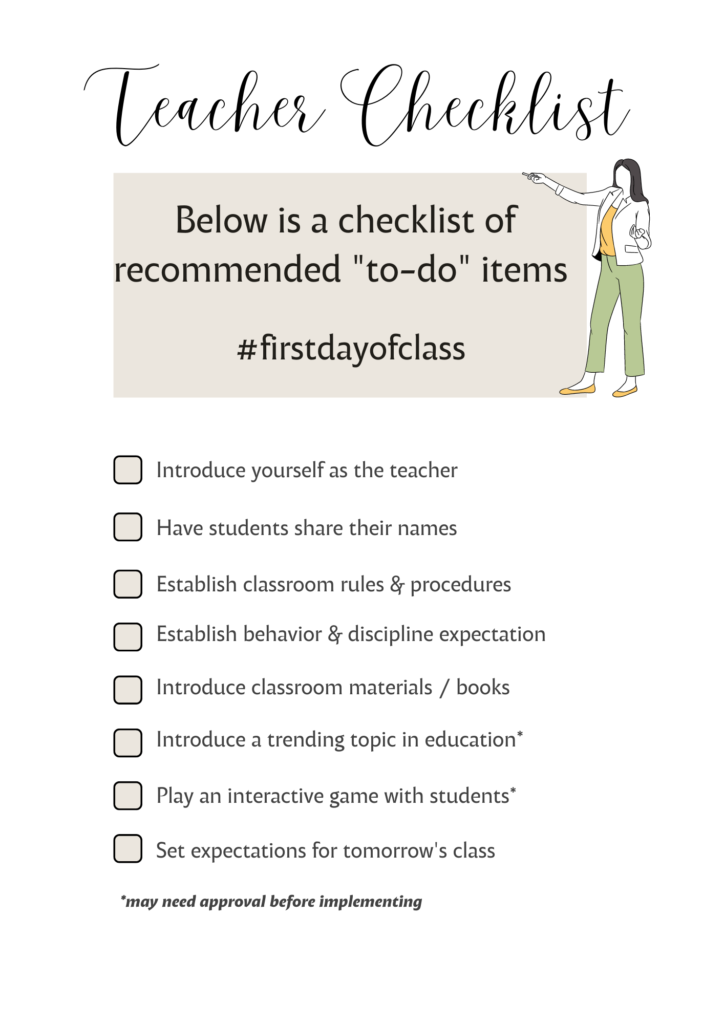
The Right Questions Bring The Right Energy
If a teacher does not consider the kinds of questions they ask in the classroom, by considering the response of students to the activities, or doesn’t plan for interesting dialogue, then it’s one lesson where the energy factor is low, and students will make it known is a lesson they don’t care to remember.
One important piece of evidence that your students don’t care is that all of a sudden, more than one student has to go to the bathroom*** in the middle of your lesson.
Sidenote: We have a free bathroom sign out sheet in our Canva library teachers can download!
***Bathroom disclaimer: As a teacher, and one time student, use your intuition to tell whether the student REALLY needs to go to the bathroom in the middle of your lesson. If they do, let them leave to go to the bathroom. If they stay, then make sure what you have to say is important, so they forget about asking to go the bathroom.
Asking Questions Using Bloom’s Taxonomy
In this article we will provide a general guide to lesson planning, as well as more direct guidelines for lesson plans in teaching core subjects such as English, maths, and science.
We will focus mainly on math literacy and the scientific method.
Lesson Planning Video
Watch our video on the seven important points to consider when lesson planning. After watching the video, read on for more details for each point.
Lesson planning for new teachers just got easier with our lesson planning bundle that includes a variety of lesson plan templates.
Click here to view our lesson planning bundle and get started today!
#1 Lesson Objectives
The lesson objective should be simple and clear to both teachers and students. Curriculum guidelines and exceptions help to make the objectives easier to achieve. Now to keep interests peeked and energy levels high, the lesson objectives shouldn’t be stated at the beginning of the lesson, but instead demonstrated throughout the lesson.
The objectives are then assessed towards the end of the lesson to check if they have actually been met. As the teacher goes through the lesson it should be clear to students why this lesson is important.
A sample objective lesson in English would be; students to recognize three main sentence types; simple sentences, compound sentences, and complex sentences.
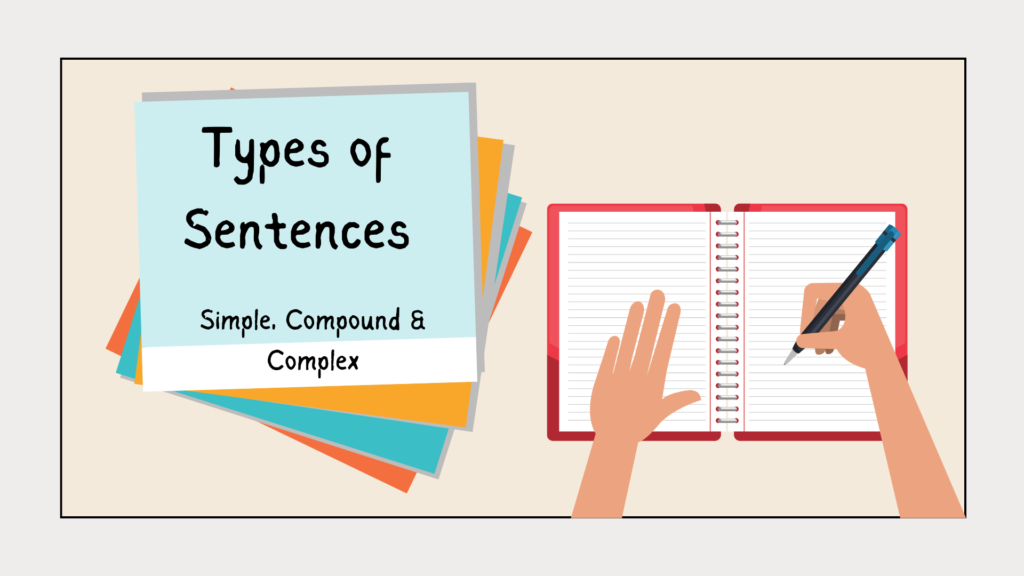
Find more information related to language development by clicking here.
#2 Vocabulary
The vocabulary emphasized in an English lesson is simple and straightforward, but what about vocabulary for topics in maths and science?
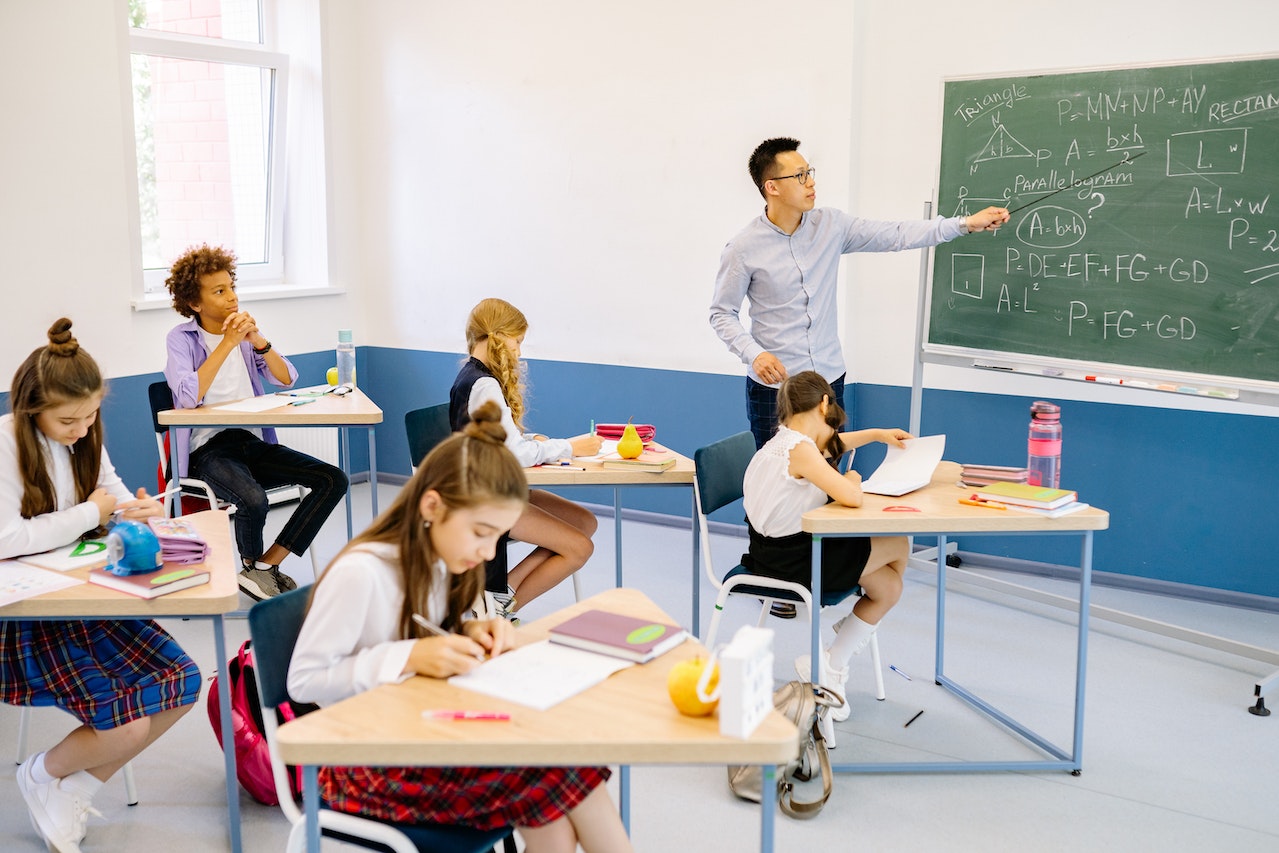
Do teachers emphasize the use of important vocabulary words to help students in communicating their understanding as it relates to the lesson?
When teachers ask students to include the vocabulary highlighted in the lesson, when communicating their answers through speaking or writing, the students see the benefit of connecting these words to how they communicate, which helps understanding.
#3 Assessments
There are two main types of assessments in education; one being formative and the other being summative.
With formative assessments these are ongoing and can range from oral communication in answering questions, observational notes, to checklists, portfolios, and rubrics students are asked to follow when completing assignments.
The main points are that during the course of a unit or chapter, the formative assessments are typically informal and on-going.
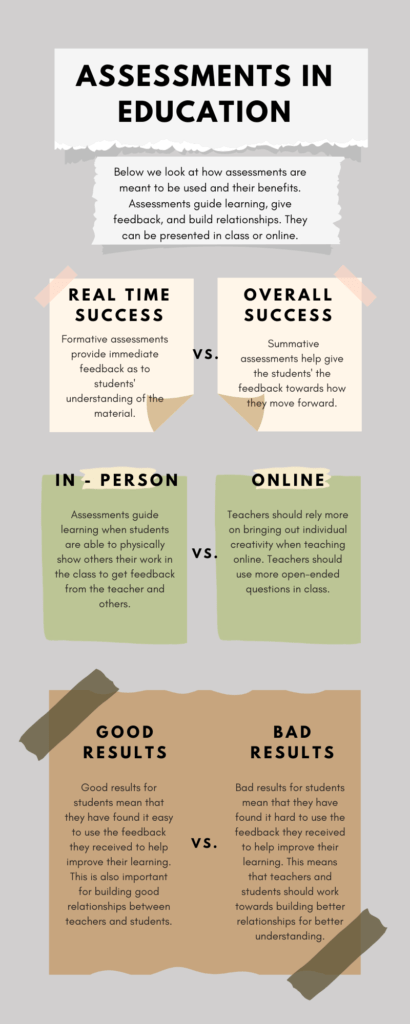
The second type of assessment is more formal and recognized by the students and teacher as indicating a clear end to the chapter or unit such as a project, chapter, or unit test.
Assessments are vital for determining if students have understood the objectives, and how best to help them if they did not seem to understand them the first time.
#4 Participation
The topic of participation can play an important role in improving the energy needed to maintain a high interest in the lesson by the teacher and students.
Students can show their excitement for participating in the lesson by raising their hands in answering questions, preparing to complete the activities, or volunteering to answer questions on the board.

Participation is a form of formative assessment that can help students improve their understanding. Certain students may shy away from participating in class discussions because of their personality.
This may become a sensitive issue for students if they feel the teacher is not sympathizing with the student. In this case teachers can set up an understanding with the student as to when to call on them in the class.
#5 Manipulatives
Research in education clearly supports the theory that not all students learn in the same way. There are different ways in which students prefer to learn. Students may be stronger as visual, or tactile learners, or as combination of such. Teachers, therefore, often need manipulatives to help with lesson objectives.
Manipulatives are also referred to as visual aids, and can be used for demonstration purposes or for engaging student-centered learning with objects where students can uses their senses to help learn more.
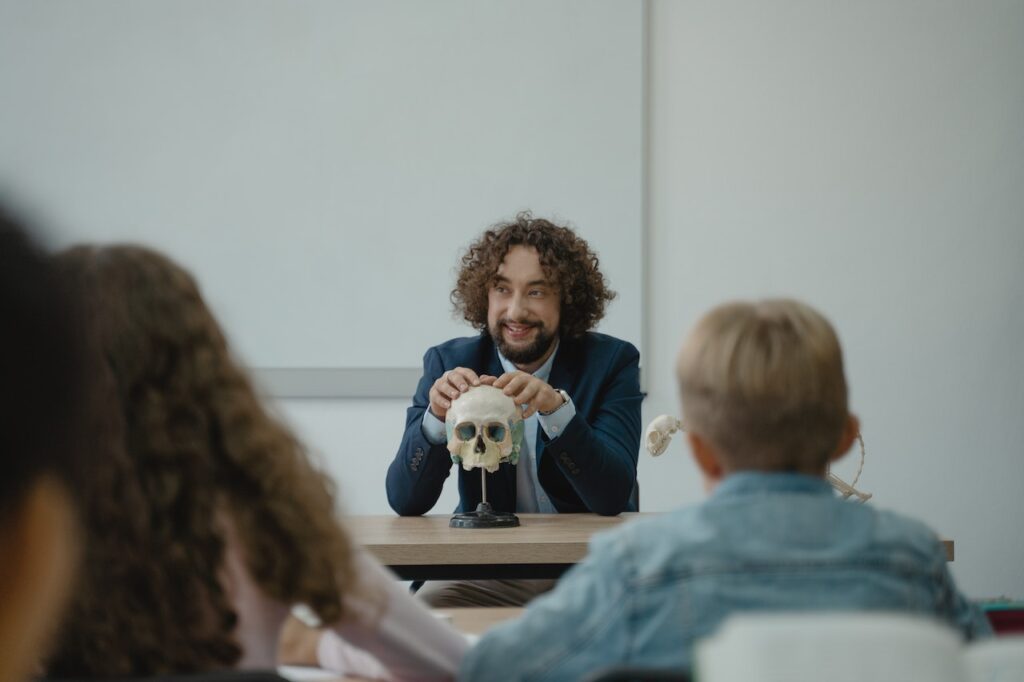
These learning tools help with connecting abstract ideas into concrete ones that students can see, and touch, which benefits students who are more visual or tactile learners.
#6 Time
Time is also crucial for the lesson to run as smoothly as possible, as teachers have students transition from one activity to another.
Allowing one activity to run longer than expected and then rushing through other activities can disrupt the energy flow needed to get through the class. Teachers should not run over time or end the class abruptly, or better yet, let the bell dismiss the students.

One important piece of information to present to students at the beginning of the school year is that there is one class time, but two actual “times” in the class. The first is “teaching time” where the teacher is explaining important information that can’t be ignored. This is not the time students can use to go to the bathroom.
The second is “independent time” where the students are working independent of the teacher and so if they need the bathroom they are free to use it.
#7 Lesson Structure
The structure of the lesson means that there is a clear beginning, middle, and end to the lesson.
The beginning is generally referred to as the warm-up, where at this point the teacher could open the lesson with a thought-provoking question, mind map, or a simple question and answer activity that is related to the main objective of the lesson. The energy level should be rising at this point.
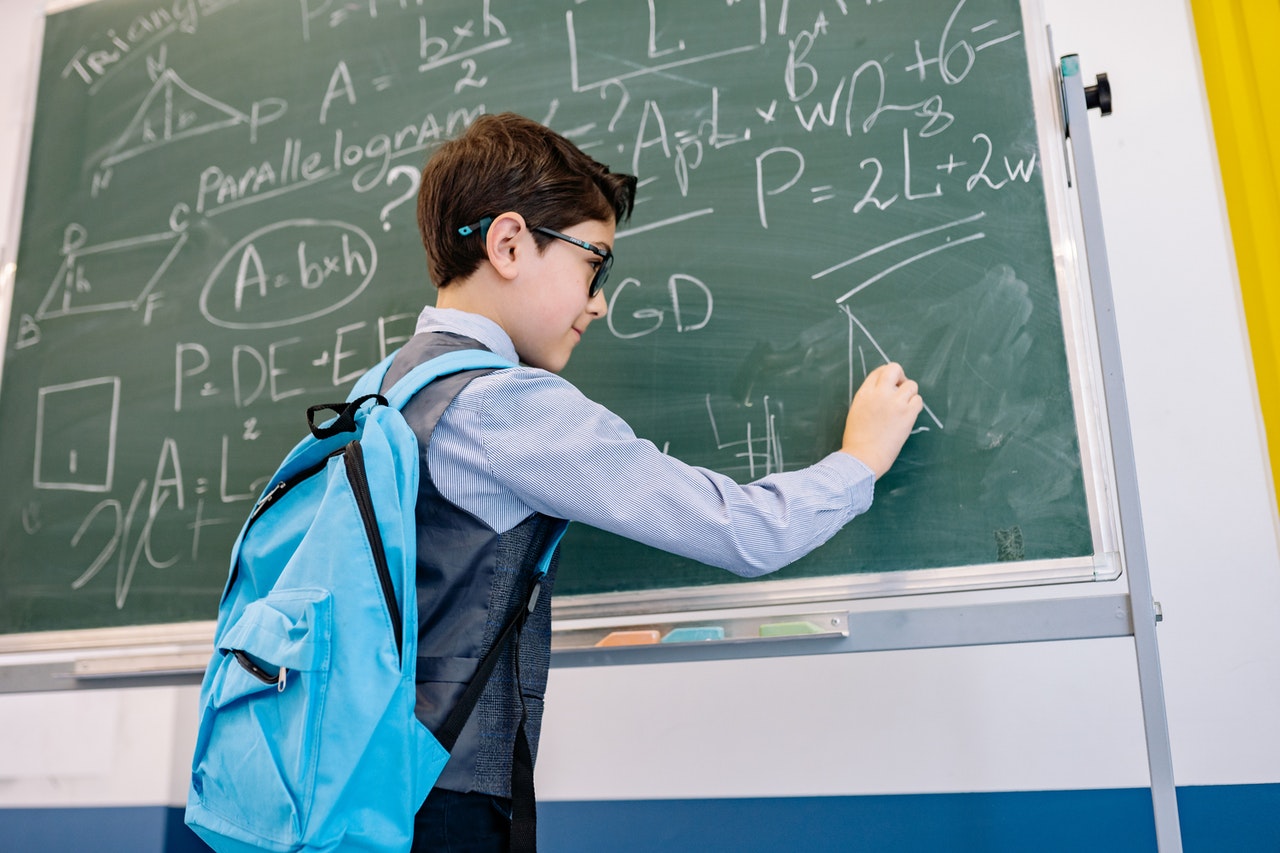
The middle, or main part of the lesson, is where the objectives for the lesson are introduced for the first time, or a review of the objectives as it relates to new objectives. The energy level is being sustained at this level.
The end can also be referred to as the wrap-up, or cool down part of the lesson. The energy level is sustained through out the wrap up, meaning that the students want to participate in finishing up the lesson instead of allowing for a sharp drop in energy levels.
Teaching Math Literacy
Literacy means having the ability to read and write. Math literacy takes the ability to read and write using math vocabulary along with the ability to problem-solve, reason, and analyze information.
In teaching maths lessons and in following the structure of the lesson plan, teachers need to “hook” the students with a thought-provoking question or mind map concerning the topic.
When teachers present the topic in a way that creates different approaches to reaching the same conclusion students will feel more in control of their learning. With maths there is more than one way to problem solve, but the process to problem solving stays consistent.
Download our infographic that highlights how math teachers and students can work together to overcome any math anxiety students may feel in the math classroom.
When students are asked to problem solve in math, there is a 3-step process with problem solving that helps with organizing and communicating the information that makes understanding the concepts easier. Here is an example of a lesson plan when it comes to teaching students about graphing in either the math or science classroom.
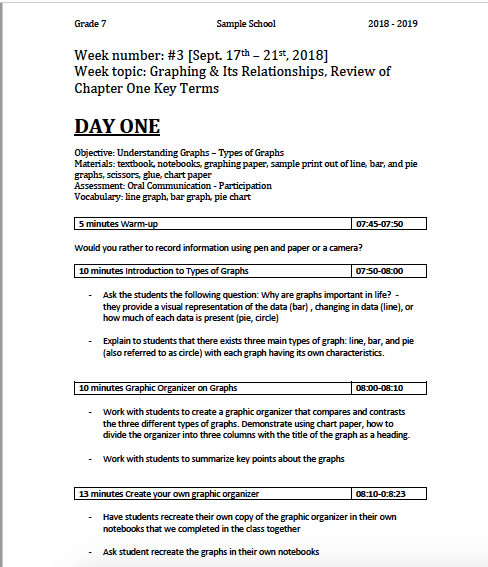
Click here for the 3 step problem solving strategy
Teaching Science Literacy Using The Scientific Method
The scientific method is the process by which students problem solve, reason, and analyze topics in science.
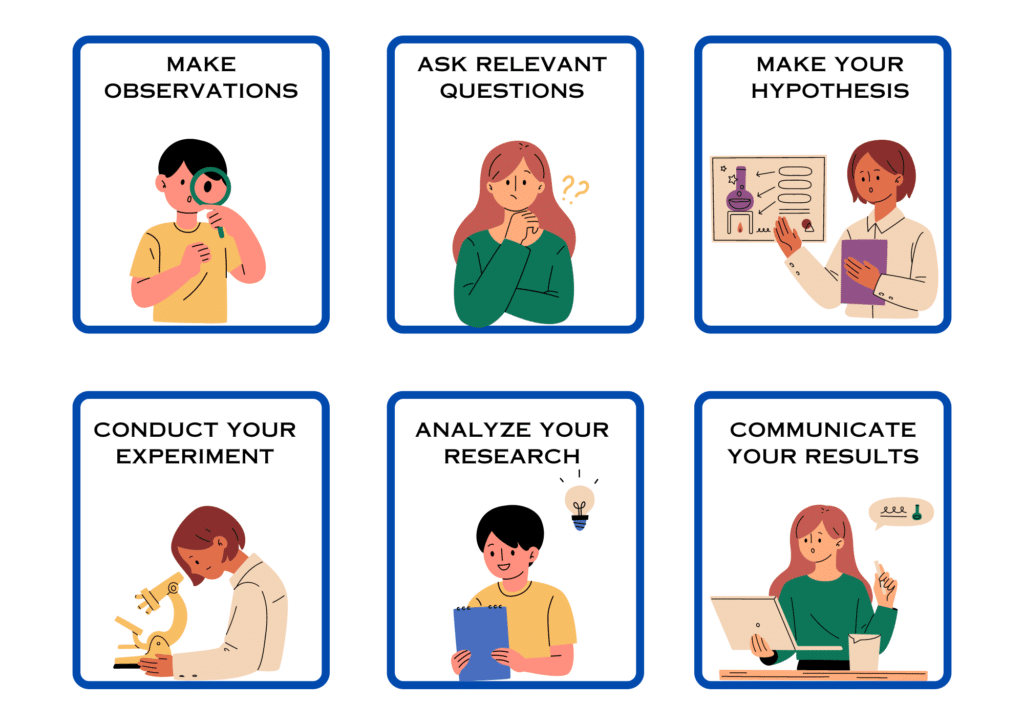
The approach to teaching science is similar to Math, students need to be “hooked” in during the warm up with an entertaining introduction to the topic.
Related Topics
Connect to our other pages as you navigate through our website. Explore what these pages have to offer you and you will be glad you did!
- ELA Oral Presentation Rubrics for the Classroom
- Teacher Identity in the Online Classroom
- How to Build Effective Classroom Management Strategies
- What Are Formative Assessments in Education?
- 5 Important Tips for PreService Teachers
- The Main Focus of Teaching Educational Strategies
Join Us Today!
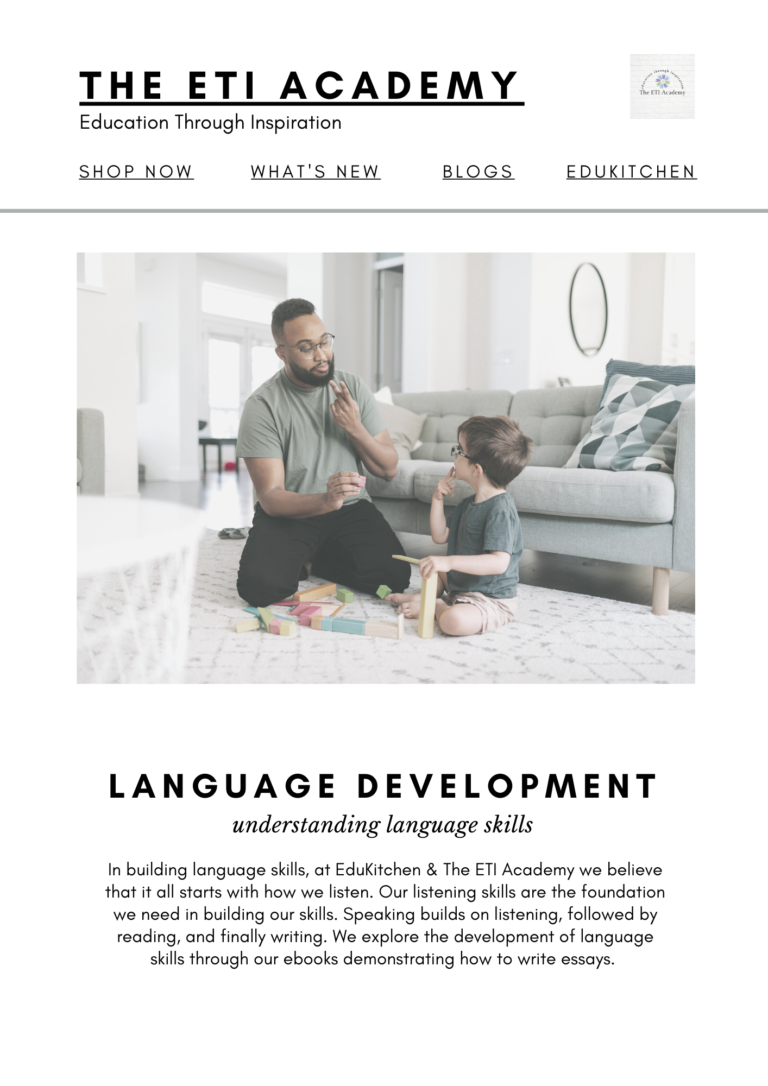
Fill out the form below to get access now!
Final Thoughts…
Now as an experienced teacher, I know that there are teacher guide books that teachers can follow that have all the lesson planning done for them.
That is not really the objective of this article.
The objective of this article is to have teachers recognize the potential they have in taking lesson plans written on paper and turn them into energized teaching lessons that students will remember for years to come.
Share Your Thoughts!
We would like to hear from you! Let us hear your thoughts on lesson planning (if you are a teacher) or what was one of your memorable lessons if you are not a teacher in the comments below! Connect with us on social media!
